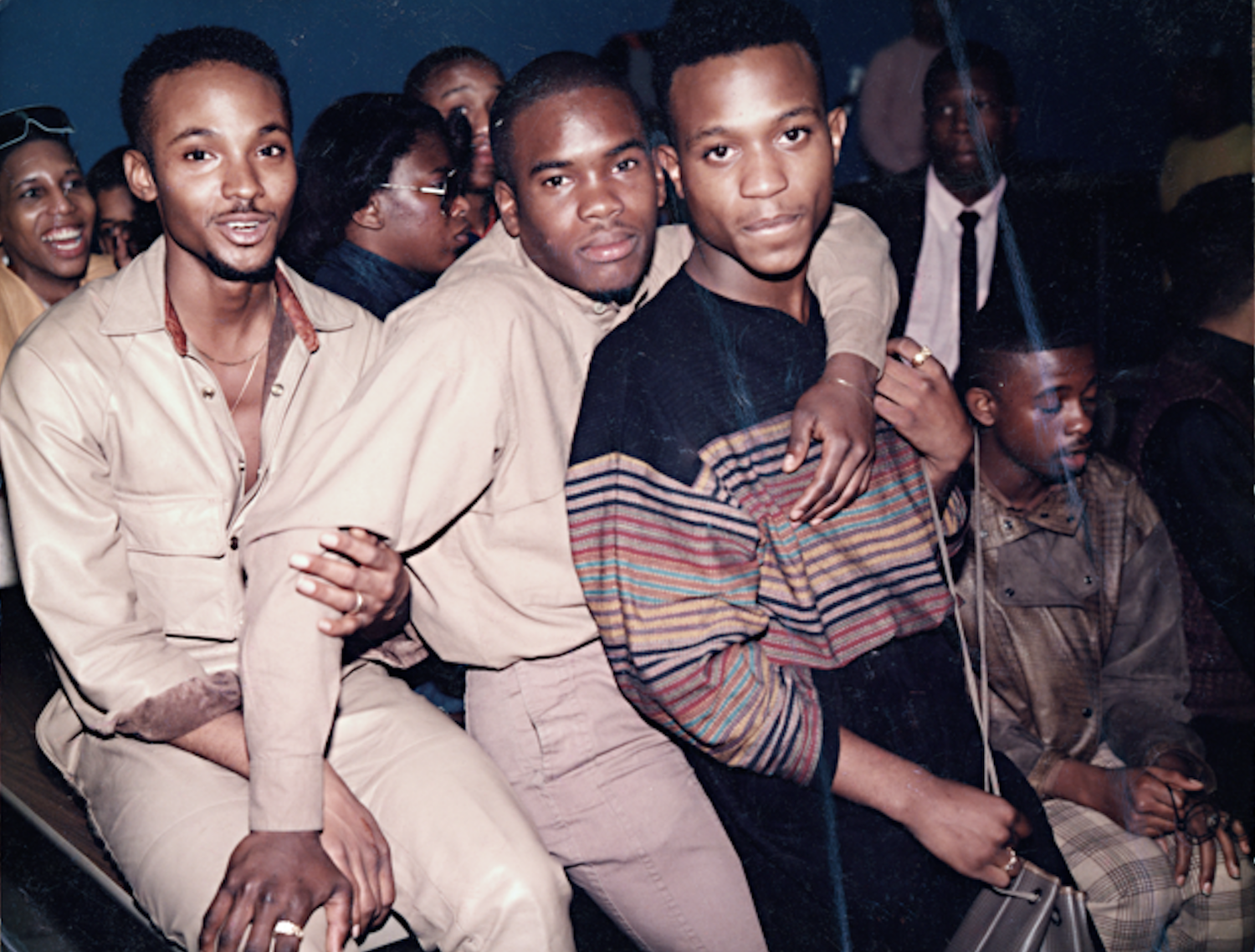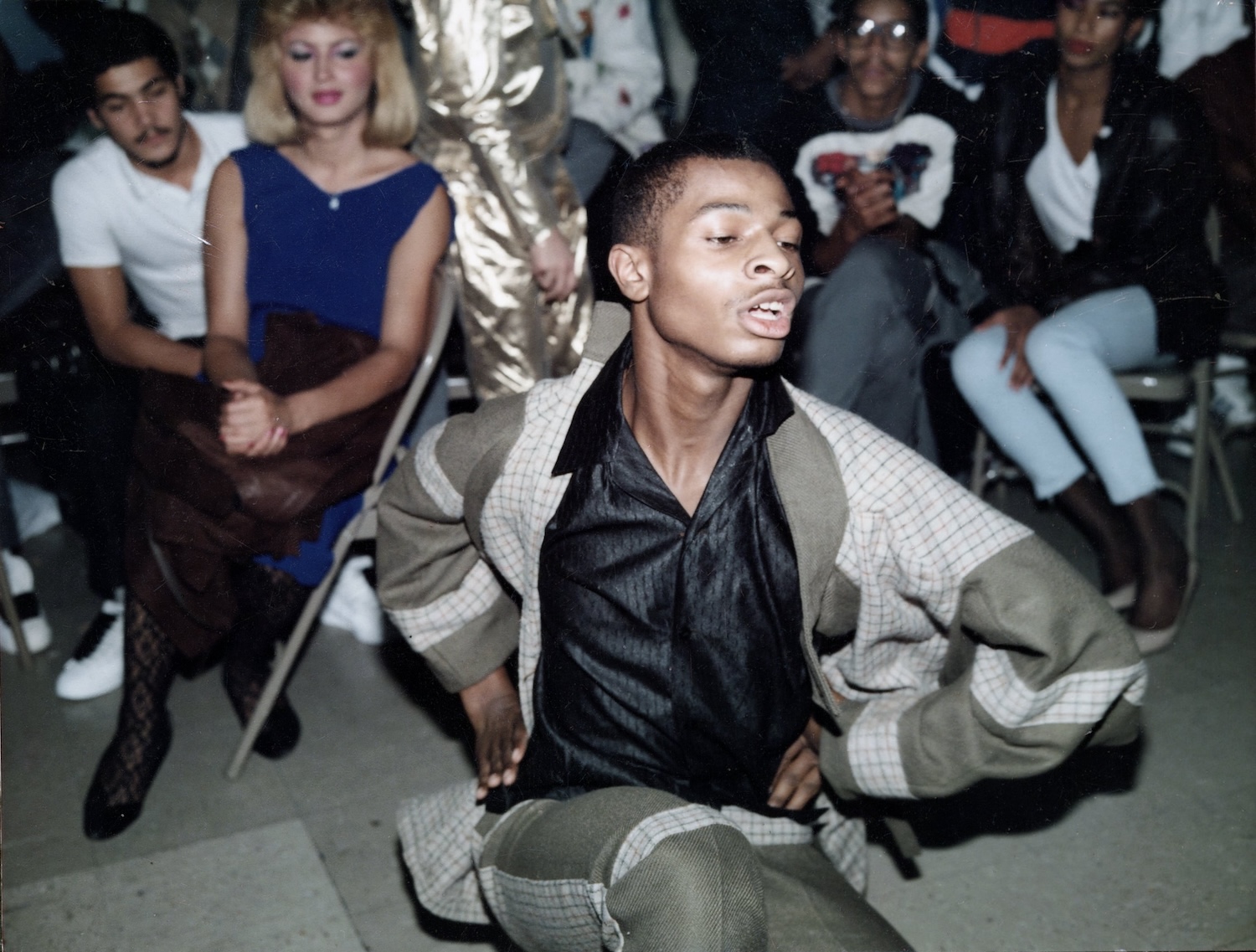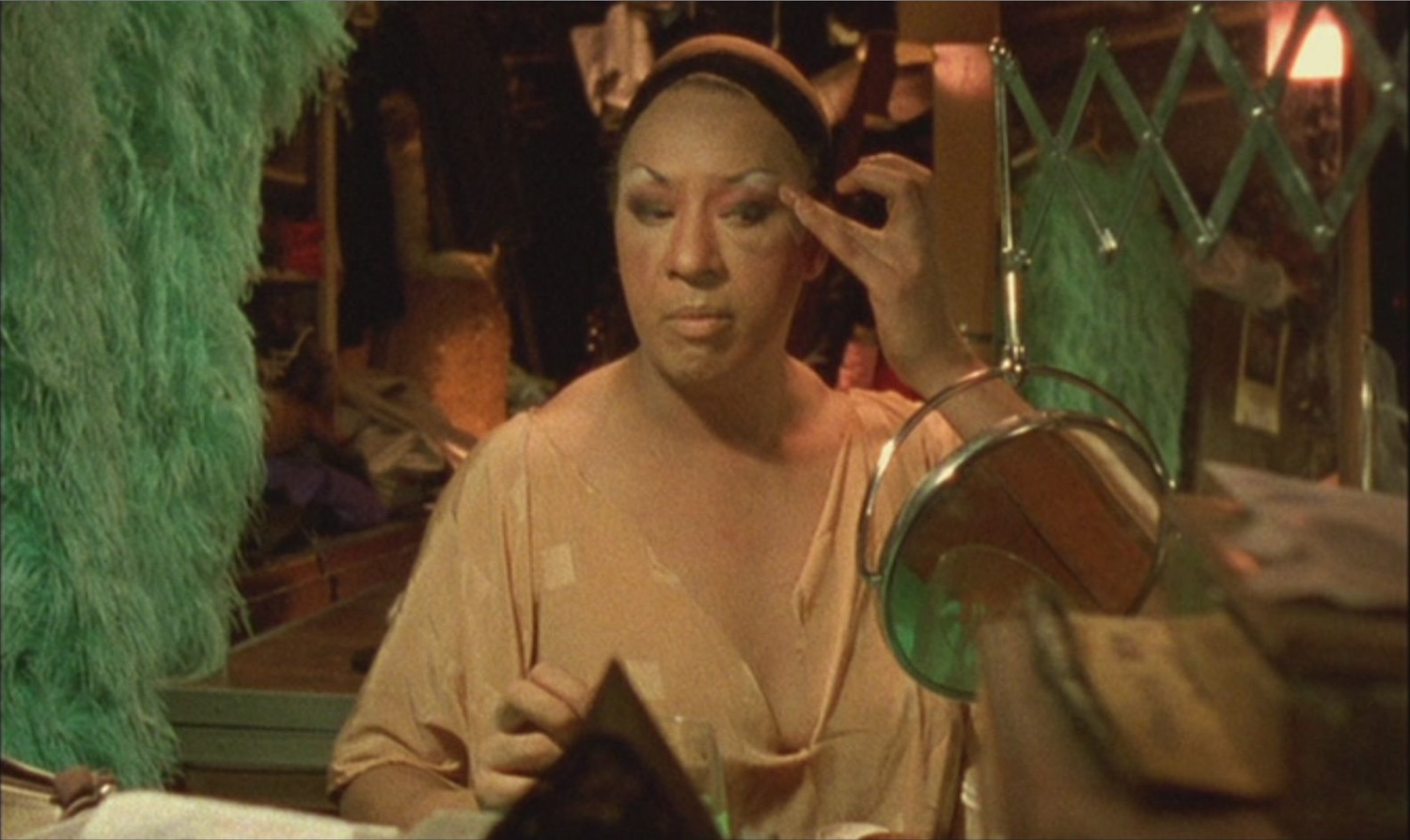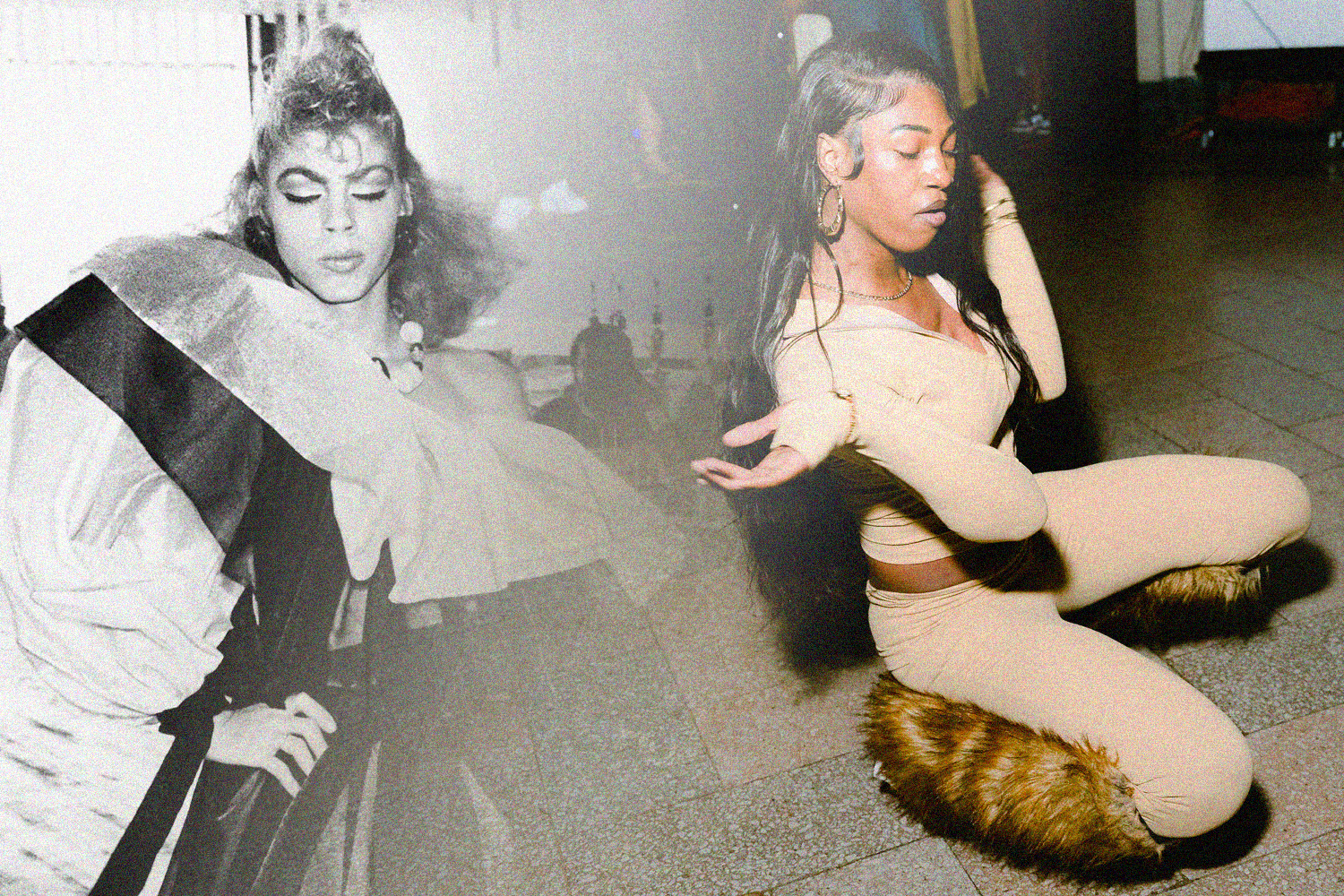In ballroom, a “house” isn’t a roof or a lease—it’s a promise. A promise that someone will notice when you don’t come home, that a plate will appear when you’re hungry, that your name will be spoken with care. Through Paris Is Burning, we follow that promise through hazy night streets and find a blueprint for survival created by and for marginalized people.
For the unfamiliar, Paris Is Burning is Jennie Livingston’s landmark documentary about New York City’s Black and Latine ballroom scene—its houses, categories, and chosen families. Released in 1990, the same year TaskForce Prevention and Community Services (TaskForce) was founded, it’s a portrait of how ballroom culture became one of the earliest models of community-centered care for Black and Brown LGBTQ+ people. Though hundreds of miles separated Chicago and New York’s ballroom scenes, both were united by the same urgency: to make safety and affirmation a reality.

What Makes a House
When the film opens, community gathers under neon light—laughing, dancing, passing food between friends. Somewhere in the background, a house mother watches. She’s not gentle in the way TV mothers are. A real house mother is tough. Stern. She’ll clock you if your walk is sloppy, but she’ll also make sure you eat before you leave the club. Like many Black mothers, ballroom mothers mix love and discipline, expectation and protection.
“It’s important for me to be the mother, ’cause there are so many little kids that I have to look out for,” says Pepper LaBeija, mother of the House of LaBeija. “When someone has rejection from their mother and father, their family, when they get out in the world, they search. They search for someone to fill that void.”
Forming a house—a chosen family—is an act of care and defiance at once. It’s a refusal to be invisible. “They’re families for a lot of children who don’t have families,” says Dorian Corey. “But this is a new meaning of family.”
That new meaning echoes through community work everywhere: mentorship as daily practice, love as the foundation of belonging. When young people arrive “X’ed out” by their families, as LaBeija puts it, a house answers with structure and accountability, with tough love and loyalty. You belong here—but you’d better show up.

Screenshot from Paris Is Burning (1990), directed by Jennie Livingston. © Miramax Films. Used under fair use for commentary.
Survival Through Expression
Survival is a universal language. In one of the film’s most poignant scenes, Venus Extravaganza and Octavia St. Laurent speak of what they want from life—fame, wealth, a modeling career, and wishes as familiar as a home and a partner who loves them. Ordinary dreams, made extraordinary by how far the world places them out of reach. That distance defined Chicago’s West Side in 1990, as the AIDS crisis ravaged neighborhoods and systems looked away.
Context matters. Not unlike today, policies, media narratives, and healthcare gatekeeping converged to make Black LGBTQ+ life harder than it needed to be. Ballroom houses answered scarcity with abundance: if a door closed, they built one; if a system refused them, they assembled a network until someone said yes. New York’s ballroom scene and Chicago’s West Side shared the same conditions—over-policed, under-resourced, brilliant anyway—and the same lesson: institutions shift when communities insist on their own blueprints.
On July 18, 1990, TaskForce AIDS Prevention was founded with that blueprint in mind. With support from Robert Ames—whose work at South Side Help Center (SSHC) connected prevention with care—and SSHC founder, Betty Smith, the organization opened a modest space near Roosevelt and Wabash. Smith had seen too many Black patients die amid indifference; she backed TaskForce because she knew survival needed more than pamphlets—it needed a place. Ames kept building that place until his death in 2005, when Ron Lee carried the work forward. Memory can be fragile; what endures are the houses we keep tending.
Survival is, by necessity, practical. “Every Black man has two strikes,” says one community member in Paris Is Burning. “You’re Black and you’re male. But you’re Black, and you’re male, and you’re gay. You’re going to have a hard fucking time.” The math of marginalization is old, and it shows up in the ledger lines of food, rent, and transit. “A lot of those kids in the balls,” notes LaBeija, “they don’t have two of nothing.”
Expression is how the ledger balances back toward joy. Entering a ball, sequins catch light, and Black bodies take center frame. The air hums; categories become portals—Executive Realness, for instance, where participants model sharply pressed pantsuits. “In real life, you can’t get a job as an executive unless you have the opportunity,” Corey explains. “In a ballroom, you can be anything you want… you’re showing the straight world that, ‘If I had the chance, I could be one.’ That is fulfillment.”
That fulfillment isn’t pretend—it’s rehearsal for dignity, the practice of carrying yourself as though the structures you deserve already exist. When people are seen and celebrated, whole realms of possibility open. TaskForce builds those conditions daily: a room where you’re greeted by name, care that doesn’t pry, programs that pair art with health. Food, medical care, clean clothes, and—equally vital—a stage to feel beautiful on.

What Legacy Builds
“Everybody wants to leave something behind them, some impression, some mark upon the world,” Corey reflects, “And then you think, you’ve left a mark on the world if you just get through it, and a few people remember your name. Then you’ve left a mark. You don’t have to bend the whole world, I think it’s better to just enjoy it. Pay your dues, and enjoy it.”
Thirty-five years on, TaskForce’s mark is the everyday work of care—thousands of small protections forming a community-wide safety net. If TaskForce is a house—and it is—it stands for the same things that keep ballroom alive: the right to be ordinary and extravagant on the same day, the promise of rooms where Black LGBTQ+ youth are seen and safe, doors that stay open on the West Side and wherever our people gather.
As Paris Is Burning ends, one question lingers: what does legacy mean when it’s shared? Maybe it’s your name called warmly from a doorway. Maybe it’s a young person seeing themselves clearly for the first time. Maybe it’s a city learning to measure health not in lab results but in laughter down the block.
This is the work: hold space for resilience, honor what we’ve lost, keep building what we need. The house is open, and all are family here.



